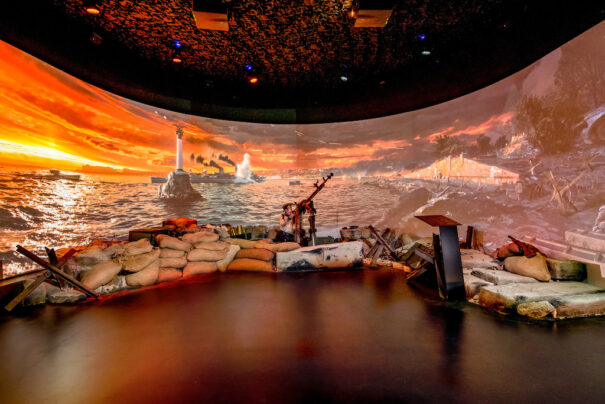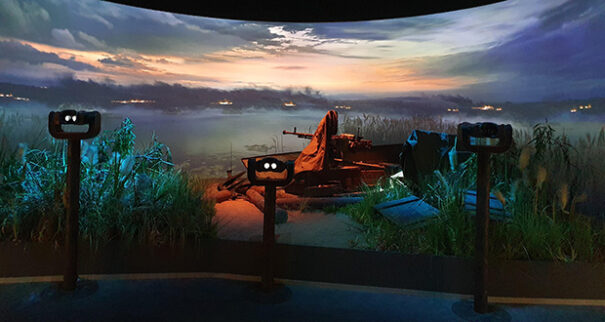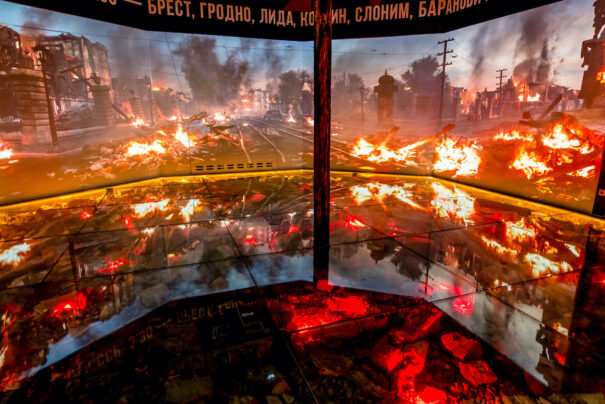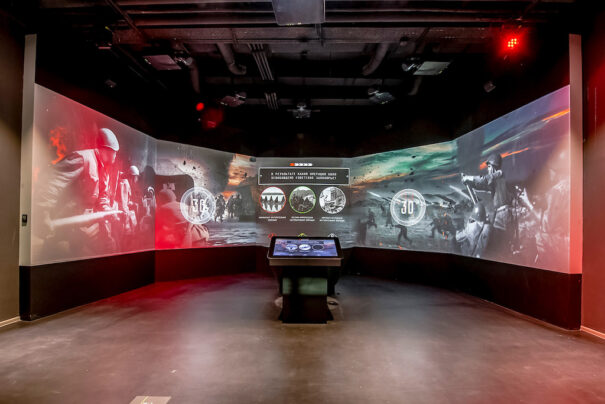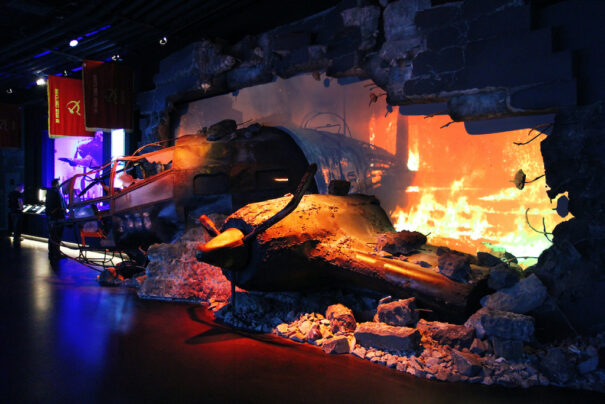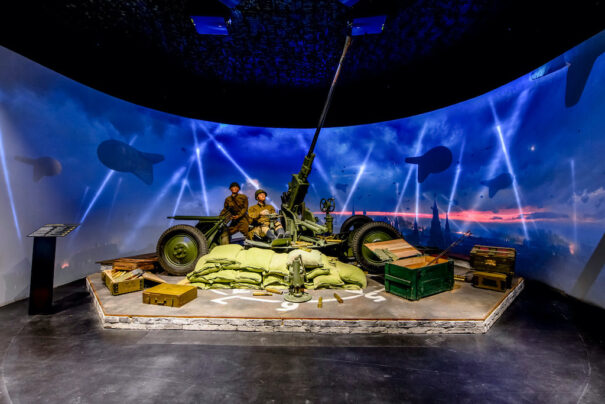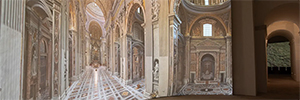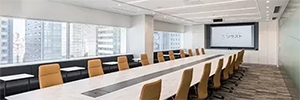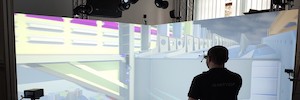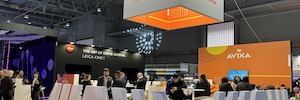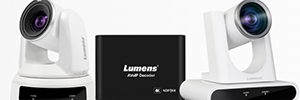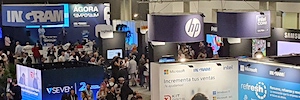El Museo Memory Lane de Kubinka despliega 180 proyectores de fósforo láser de Barco
Con un recorrido 1,5 Km. de instalaciones visuales interactivas e inmersivas que evocan escenas de la Gran Guerra Patria de la Unión Soviética.
El nuevo complejo del Museo Memory Lane de Kubinka (Rusia) rinde homenaje a los millones de soldados y ciudadanos soviéticos que lucharon en la Gran Guerra Patria, también conocida como Frente Oriental de la Segunda Guerra Mundial.
Ubicado en el corazón del Parque Patriota, este museo se ha convertido en una atracción turística de temática militar sobre las hazañas del pueblo ruso, que rodea a la Catedral Principal de las Fuerzas Armadas Rusas (Catedral de la Resurrección de Cristo), analizada en Digital AV, y en un ejemplo para otras organizaciones que quieren causar sorprender a sus visitantes con la narración visual de historias.
With 1,5 Km. de instalaciones visuales que evocan escenas de guerra en una experiencia inmersiva, el museo cuenta con 35 galerías y salas de exposición para ofrecer un recorrido educativo interactivo a sus visitantes que se basa en la tecnología de proyección de la firma Ship.
Este complejo museístico tiene 1.418 escalones – en memoria de los 1.418 días y noches de batalla durante la Gran Guerra Patria -y su recorrido plantea una historia detallada de cada día del conflicto bélico a través de la línea de tiempo gráfica de la exposición.
Para llevar a cabo este ambicioso proyecto de visualización, los responsables del museo recurrieron al integrador ruso Avilex para la instalación del equipo audiovisual que para Alexey Samokhin, director creativo de la compañía, “ha sido un desafío tecnológico inigualable”.
Como explica este directivo, “aunque estamos acostumbrados a trabajar con las principales marcas del sector en grandes instalaciones, el mayor desafío de este proyecto fue el apretado plazo de entrega. A mediados de febrero de 2020 vimos que necesitaríamos más de cien proyectores y que se esperaba completar el proyecto en mayo de 2020, y Barco era el único proveedor de visualización que podía hacerlo”.
Con la previsión de que el museo abriera sus puertas el 9 de mayo de 2020, su inauguración tuvo que posponerse hasta el 22 de junio debido a la pandemia por la COVID-19, periodo en el que los equipos de Avilex y Barco trabajaron conjuntamente sin descanso.
“El papel del distribuidor Auvix también fue crucial -recuerda Samokhin-, asegurando la entrega más rápida y segura dentro del apretado plazo, y se aseguró de que todas las instalaciones estuvieran terminadas a tiempo, incluso antes de la fecha de apertura inicial”.
El complejo del Museo Memory Lane es tan monumental como diverso visualmente: la exposición consta de 35 galerías y salas de exposición inmersivas, tres salas de cine panorámico, dos túneles audiovisuales, zonas de descanso y otra de bienvenida.
“Queríamos satisfacer los requisitos creativos del cliente, pero también que las configuraciones de los 180 proyectores desplegados fueran lo más uniformes posible para facilitar su mantenimiento. Fuimos capaces de cumplir todos los requisitos con una mezcla de proyectores de fósforo láser de la serie G60 de Barco y los modelos F70, F80 y F90”, puntualiza Samokhin.
Avilex y Barco han creado bastantes instalaciones para el museo, como una con un avión alemán que se había estrellado mediante una proyección cartográfica en la que se utilizan el modelo G60.
Este proyector también se ha instalado en las cinco salas panorámicas del museo, equipadas con pantallas de proyección de 180º para crear un fondo dinámico e inmersivo.
El museo también utiliza un sistema de proyección de cúpula de cuatro canales, con los modelos Barco F80, en la sala denominada ‘Batalla por el Cáucaso’, para la que se ha construido en un escenario físico y rocoso.
Entre las instalaciones que han supuesto un reto tecnológico para ambas empresas se encuentran tres salas de ‘inmersión total’, cada una de ellas con una temática específica en torno a un momento clave de la guerra, con proyección en 360º y una pantalla ubicada en el techo.
“Al principio no teníamos ni idea de cómo podíamos hacer funcionar esta instalación por la limitación de espacio y la construcción de las salas -explica Samokhin-. El proyector compacto Barco F70, combinado con una lente de alcance ultracorto, ofreció la solución adecuada”.
El museo también incluye salas de cine, en las que se han instalado tres proyectores Barco F80 que ofrecen imágenes con una resolución de 4K UHD. “Toda la instalación es una pieza de arte y tecnología que puede servir de ejemplo para proyectos de museos en todo el mundo”, concluye Samokhin.
You liked this article?
Subscribe to our Feed And you won't miss a thing.



